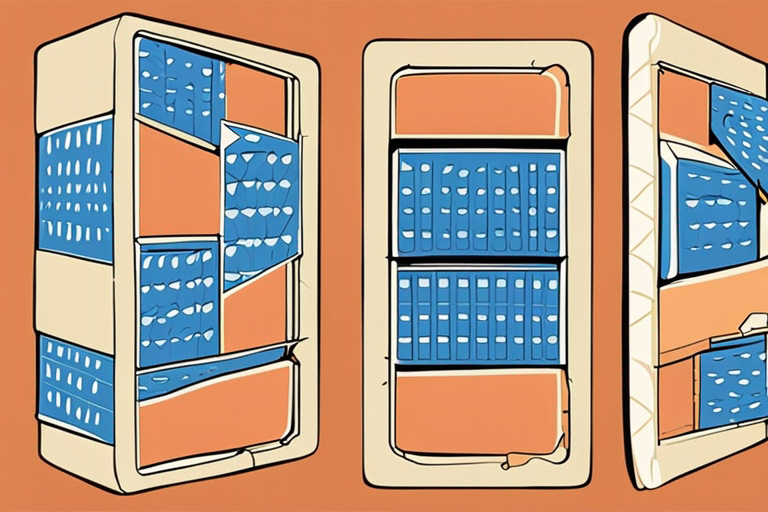
Can I Freeze a Blue Cheese Wedge to Preserve It?
Get Your Free Food Safety Cheat Sheet
30 most common foods with instant answers. Print it and stick it on your fridge—completely free!
Can I Freeze a Blue Cheese Wedge to Preserve It?
Blue cheese is a beloved type of cheese known for its distinct flavor and creamy texture. However, if you have a large wedge of blue cheese that you can't finish in one sitting, you may be wondering if you can freeze it to preserve its freshness. In this blog post, we will explore the ins and outs of freezing a blue cheese wedge, including practical tips, safety information, and best practices to ensure the quality of your cheese is maintained. (Blue cheese wedge)
Understanding Blue Cheese
Blue cheese is a type of cheese that is characterized by the distinctive blue veins or spots of mold that run through it. This mold is typically Penicillium roqueforti or Penicillium glaucum, which gives the cheese its unique flavor profile. Blue cheese can vary in intensity, from mild and creamy to sharp and pungent, depending on the specific variety.
Blue cheese is a perishable dairy product that requires proper storage to maintain its flavor and texture. When stored correctly, blue cheese can last for several weeks in the refrigerator. However, if you have a large wedge of blue cheese and want to extend its shelf life, freezing can be a viable option.
Freezing Blue Cheese: Best Practices
Freezing blue cheese can help prolong its shelf life and prevent it from spoiling. However, it's essential to follow the proper steps to freeze blue cheese correctly to maintain its quality. Here are some best practices to keep in mind when freezing a blue cheese wedge:
Steps to Freeze Blue Cheese:
-
Wrap the Cheese Properly: Before freezing the blue cheese, wrap it tightly in plastic wrap or aluminum foil to prevent air exposure, which can cause freezer burn and affect the cheese's texture.
-
Use a Freezer-safe Container: Place the wrapped blue cheese wedge in a freezer-safe container or resealable plastic bag to protect it from absorbing odors from other foods in the freezer.
-
Label and Date the Package: To keep track of the freezing date and type of cheese, label the package with the current date and the type of blue cheese.
-
Store in the Freezer: Place the wrapped and labeled blue cheese wedge in the freezer, ensuring it is stored away from strong-smelling foods to prevent flavor transfer.
Tips for Thawing Blue Cheese:
-
Slow Thawing: When you're ready to use the frozen blue cheese, transfer it to the refrigerator to thaw slowly. Avoid using the microwave or hot water to thaw the cheese quickly, as this can alter its texture.
-
Use Thawed Cheese Promptly: Once the blue cheese is thawed, consume it within a few days for the best flavor and texture.
Safety Considerations When Freezing Blue Cheese
While freezing blue cheese can help extend its shelf life, there are some safety considerations to keep in mind to ensure the quality and safety of the cheese:
Safety Tips:
-
Quality Changes: Freezing blue cheese can alter its texture slightly, making it crumbly or grainy upon thawing. However, the flavor should remain relatively consistent.
-
Use Frozen Cheese in Prepared Dishes: Frozen blue cheese may be best used in cooked or prepared dishes like sauces, dips, or melted atop dishes, rather than for eating on its own.
-
Avoid Refreezing: Once blue cheese has been thawed, it is not recommended to refreeze it, as this can further impact its texture and flavor.
Conclusion
In conclusion, freezing a blue cheese wedge can be a practical way to extend its shelf life and prevent waste. By following the proper steps for freezing and thawing blue cheese, you can maintain the quality and flavor of this beloved cheese variety. Remember to wrap the cheese tightly, use a freezer-safe container, label and date the package, and thaw the cheese slowly in the refrigerator for the best results. Keep in mind the safety considerations when freezing blue cheese and enjoy using your frozen blue cheese in a variety of dishes to elevate their flavor profile. [blue cheese wedge](/food/blue cheese wedge) (Blue cheese wedge)

Authoritative Food Safety References
These agencies and university labs inform every tip and health precaution we publish.
USDA FoodKeeper – Cold Storage Guidelines
Official refrigerator, freezer, and pantry timelines maintained by the U.S. Department of Agriculture.
Visit USDA FoodKeeperFDA Produce Safety Rule & Grower Guidance
Field-to-fridge handling practices that prevent contamination of fruits, vegetables, and leafy greens.
Visit FDA Produce SafetyCDC Foodborne Illness Prevention Hub
Surveillance-backed guidance on pathogens, symptoms, and steps to reduce foodborne illness risk.
Visit CDC Food SafetyUC Davis Postharvest Technology Center
University research detailing optimal storage atmospheres for produce after harvest.
Visit UC Davis PostharvestPenn State Extension – Home Food Preservation & Safety
Peer-reviewed extension bulletins on safe canning, chilling, and reheating practices.
Visit Penn State ExtensionHow long can I freeze a blue cheese wedge?
Can I refreeze a blue cheese wedge after thawing it?
How should I store a blue cheese wedge in the refrigerator?
How can I tell if a blue cheese wedge has gone bad?
Get Your Free Food Safety Cheat Sheet
30 most common foods with instant answers. Print it and stick it on your fridge—completely free! Want more? Upgrade to the complete guide with 70+ foods.
Scan your food directly and get instant safety info using our AI-powered camera feature.